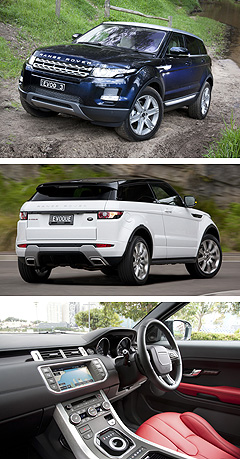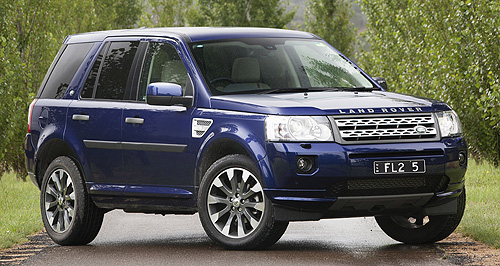Make / Model Search
News - Land Rover - FreelanderLand Rover’s Freelander here to stayCrossover shopping: Higher prices and lower practicality separates customers for the new Range Rover Evoque and the more utilitarian Freelander. More utilitarian Land Rover Freelander not expected to lose sales to new Range Rover11 Nov 2011 THE Australian division of British off-road specialist Land Rover has committed to its Freelander compact SUV despite this month’s arrival – and expected market success – of the new Range Rover Evoque. Speaking at the recent Evoque launch in Sydney, Land Rover product manager Brett Lewis-Driver told journalists the Evoque will “definitely” not replace the Freelander because the two models cater to different customers. “The Freelander is quite a bit more practical than a Range Rover Evoque,” he said. Freelanders are priced from $44,990 to $65,854 (plus on-road costs) in Australia, while the Evoque starts at $53,395 and tops out at $73,895. When front-drive variants arrive next July, the baby Rangie’s entry price will drop to $49,995, meaning there is potential for the Evoque to cut across the Freelander. However, Land Rover says the average transaction price recorded on pre-sold Evoques is $75,000. “Potentially, with some of the higher derivatives of Freelander we may get some people looking across (to Evoque), but Freelander is sill quite substantially a lower-priced vehicle than the Evoque.” The Freelander shares its 2.2-litre turbo-diesel engines and some of its underpinnings with the Evoque, but is more utilitarian, practical and off-road oriented.  Left: Range Rover Evoque. Left: Range Rover Evoque.Compared with the Freelander, the Evoque’s body is lowered 27mm on the chassis, but ground clearance is increased by 12mm while the wheel track has been widened 20mm. Major suspension components are made from aluminium in the baby Rangie, a material also used on the bonnet and roof, which combined with plastic wings, a composite tailgate and high-strength and boron steels in the bodywork result in the Evoque weighing about 100kg less than the Freelander. “Freelander has its own attributes,” said Mr Lewis-Driver. “While Evoque has a bit more ground clearance, Freelander has more wheel travel, better approach angles and a lot more space.” In February this year the Freelander was refreshed with the arrival of the aforementioned 2.2-litre diesel engines now shared with the Evoque, available in 110kW TD4 and 140kW SD4 tune and equipped with idle-stop when paired with a six-speed manual transmission. The diesel Freelander consumes 6.6 litres of fuel per 100 kilometres in manual guise, while the Evoque using the same drivetrain uses only 5.7L/100km – a 13 per cent efficiency gap. In terms of petrol power, rather than the Evoque’s 177kW 2.0-litre turbocharged petrol engine, the Freelander employs a naturally aspirated 171kW 3.2-litre straight-six, although this is likely to change as Land Rover is keen to reduce its corporate average fuel economy and CO2 emissions figures. With 1049 sales to the end of October – an increase of 23.8 per cent compared with the same period last year – the Freelander is the brand’s third-best-selling model behind the Land Rover Discovery (1769 units) and the Range Rover Sport (1340).  Read more |
Click to shareLand Rover articlesResearch Land Rover Motor industry news |












Facebook Twitter Instagram